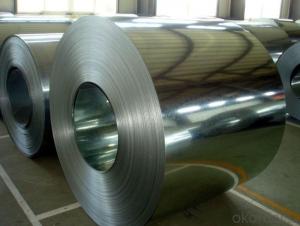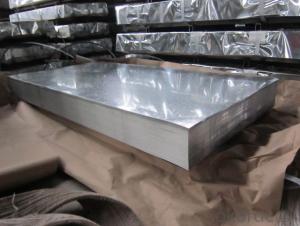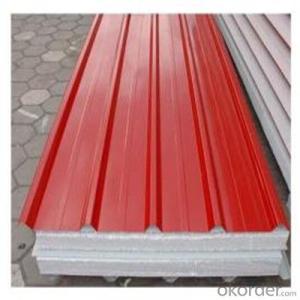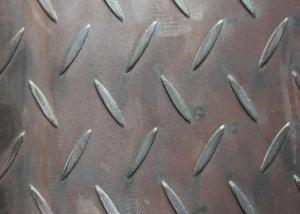Pre-Painted Galvanized Corrugated Steel---Royal Blue
- Loading Port:
- Shanghai
- Payment Terms:
- TT or LC
- Min Order Qty:
- 100 m.t.
- Supply Capability:
- 10000 m.t./month
OKorder Service Pledge
OKorder Financial Service
You Might Also Like
1. Pre-Painted GI/GL Steel Coil Description:
With GI as base material, after pretreatment (degrease and chemical treatment ) and liquid dope with several layers of color, then after firing and cooling, finally the plate steel is called pre-painted galvanized (aluzinc) steel. Pre-painted galvanized steel is good capable of decoration, molding, corrosion resistance. It generally displays superior workability, durability and weather resistance.
2.Main Features of the Pre-Painted GI/GL Steel Coil:
• Excellent process capability
• Smooth and flat surface
• Workability, durability
• Excellent heat resistance performance
• High strength
• Good formability
• Good visual effect
3.Pre-Painted GI/GL Steel Coil Images

4.Pre-Painted GI/GL Steel Coil Specification
Standard: AISI, ASTM, BS, DIN, GB, JIS
Grade: DX51D, DX52D
Thickness: 0.17-2.0mm
Brand Name: KMRLON
Model Number: coil
Type: Steel Coil
Technique: Cold Rolled
Surface Treatment: Coated
Application: Boiler Plate
Special Use: High-strength Steel Plate
Width: 20-1250mm
Length: customized
commoidty: pre-painted galvanized steel coil
Thickness: 0.13-4.0mm
width: 20-1250mm
zinc coating: 40-180g/m2
printing thickness: top side: 20+/-5 microns, back side: 5-7 microns
color: all RAL color
surface treatment: color coated
coil weight: 4-7 tons
coil ID: 508/610mm
packaging: standard seaworthy packing
5.FAQ of Pre-Painted GI/GL Steel Coil
1. What’s the application of this product?
Roof, roof structure, surface sheet of balcony, frame of window, etc.
2. What’s the brand of the paint?
We use the best brand of all of the word—AKZO.
3. How to guarantee the quality of the products?
We have established the international advanced quality management system,every link from raw material to final product we have strict quality test;We resolutely put an end to unqualified products flowing into the market. At the same time, we will provide necessary follow-up service assurance.
4. How long can we receive the product after purchase?
Usually within thirty working days after receiving buyer’s advance payment or LC. We will arrange the factory manufacturing as soon as possible. The cargo readiness usually takes 15-25 days, but the shipment will depend on the vessel situation.
- Q: What are the safety precautions when handling steel sheets?
- When handling steel sheets, there are several safety precautions that should be followed to ensure the well-being of individuals and prevent accidents. These precautions include the following: 1. Personal Protective Equipment (PPE): It is essential to wear the appropriate PPE when handling steel sheets. This typically includes safety goggles or glasses, gloves, and steel-toed boots. PPE helps protect against potential injuries such as cuts, burns, and eye damage. 2. Proper Lifting Techniques: Steel sheets can be heavy and awkward to handle, so it is crucial to use proper lifting techniques to avoid strain or injury. Lift with your legs, not your back, and use team lifting when necessary. Avoid any sudden or jerky movements while handling the sheets. 3. Secure Storage and Transport: When storing or transporting steel sheets, ensure that they are properly secured to prevent them from shifting or falling. Use appropriate equipment such as straps or chains to secure the sheets, and make sure they are evenly distributed to maintain balance. 4. Clear Work Area: Before handling steel sheets, ensure that the work area is clear of any obstacles or debris. This will help prevent tripping or slipping hazards and provide a clear path for moving the sheets. 5. Adequate Lighting: Proper lighting is essential to ensure good visibility when handling steel sheets. Insufficient lighting can increase the risk of accidents and injuries, so make sure the work area is well-lit to avoid any potential mishaps. 6. Training and Education: It is important for individuals handling steel sheets to receive proper training and education on safe handling procedures. This includes understanding the weight and dimensions of the sheets, as well as the correct techniques for lifting and moving them. 7. Awareness of Sharp Edges: Steel sheets often have sharp edges, which can cause cuts or lacerations. Always handle the sheets with caution and be aware of any sharp edges. If necessary, use protective guards or edge protectors to minimize the risk of injury. 8. Regular Maintenance and Inspection: Regularly inspect the steel sheets for any signs of damage, such as sharp edges, rust, or structural weaknesses. Replace or repair any damaged sheets to ensure safe handling. By following these safety precautions, individuals can minimize the risk of accidents and injuries when handling steel sheets. It is important to prioritize safety and take the necessary steps to protect oneself and others in the work environment.
- Q: What are the different packaging options for steel sheets?
- Some common packaging options for steel sheets include wooden crates, cardboard boxes, and metal skids. These packaging options provide protection during transportation and storage, ensuring that the steel sheets remain in good condition.
- Q: What is the average cost of steel sheets per square foot?
- The cost of steel sheets per square foot can differ significantly due to various factors, including the type of steel, thickness, size, and market conditions. Nevertheless, as of 2021, the price range for steel sheets averages from $5 to $20 per square foot. It is crucial to acknowledge that this estimate is broad, and prices may vary depending on the location, supplier, and other market aspects. Consequently, it is advisable to collect quotes from multiple suppliers in order to obtain an accurate and current cost for steel sheets per square foot.
- Q: What are the common tolerances for steel sheets?
- The common tolerances for steel sheets typically vary depending on factors such as the grade and thickness of the steel. However, some common tolerances for steel sheets include dimensional tolerances for length, width, and thickness, as well as flatness and surface finish tolerances. These tolerances are established to ensure the quality and consistency of steel sheets in various applications.
- Q: Are steel sheets suitable for magnetic shielding?
- Yes, steel sheets are suitable for magnetic shielding. Steel is a ferromagnetic material with high permeability, meaning it can effectively redirect and absorb magnetic fields. This makes steel sheets an excellent choice for shielding against magnetic interference and reducing magnetic fields in various applications.
- Q: What is the weight of a steel sheet?
- The weight of a steel sheet can vary depending on its dimensions, thickness, and density.
- Q: What is a steel sheet?
- A steel sheet is a flat and thin piece of metal made from steel, commonly used in construction, manufacturing, and various industrial applications.
- Q: Are steel sheets suitable for battery enclosures or casings?
- Yes, steel sheets are often suitable for battery enclosures or casings due to their durability, strength, and ability to provide effective protection against external impacts or hazards.
- Q: Can steel sheets be used for manufacturing shipping containers?
- Yes, steel sheets can be used for manufacturing shipping containers. Steel is a durable and strong material that provides excellent structural integrity, making it ideal for constructing shipping containers. Steel sheets are typically used to create the walls, roof, and floor of the container, ensuring the container can withstand the rigors of transportation and protect the goods inside. Additionally, steel is resistant to various weather conditions, corrosion, and pests, making it a reliable choice for shipping container manufacturing.
- Q: How are steel sheets protected during transportation by air?
- Steel sheets are protected during transportation by air through various measures such as packaging them in protective covers, using cushioning materials like foam or bubble wrap, securing them with straps or bands to prevent movement, and placing them in sturdy crates or pallets to minimize the risk of damage. Additionally, some steel sheets may undergo corrosion-resistant coatings or be stored in climate-controlled containers to protect them from moisture or extreme temperature changes during transit.
Send your message to us
Pre-Painted Galvanized Corrugated Steel---Royal Blue
- Loading Port:
- Shanghai
- Payment Terms:
- TT or LC
- Min Order Qty:
- 100 m.t.
- Supply Capability:
- 10000 m.t./month
OKorder Service Pledge
OKorder Financial Service
Similar products
Hot products
Hot Searches
Related keywords




























